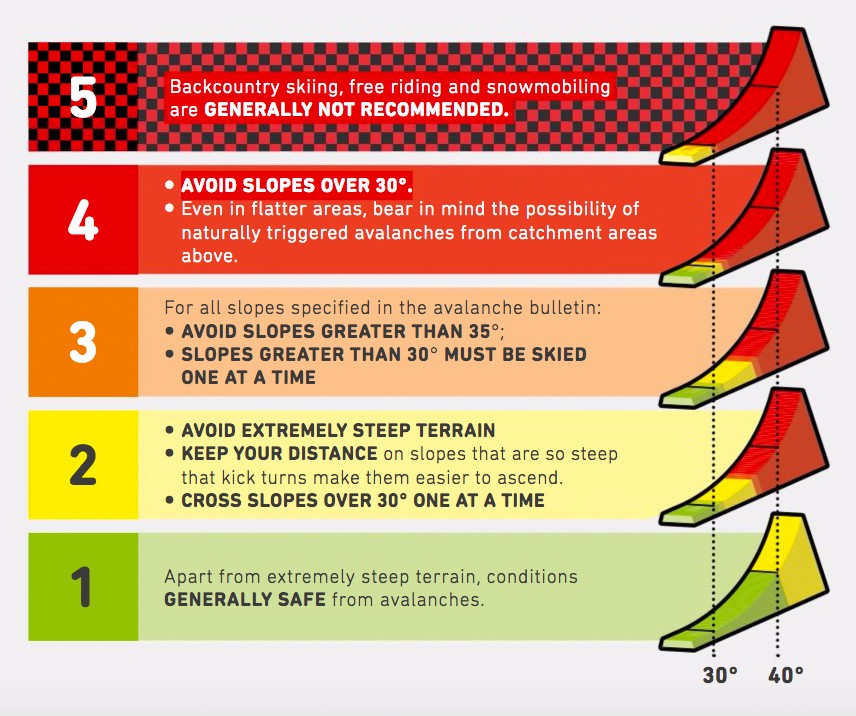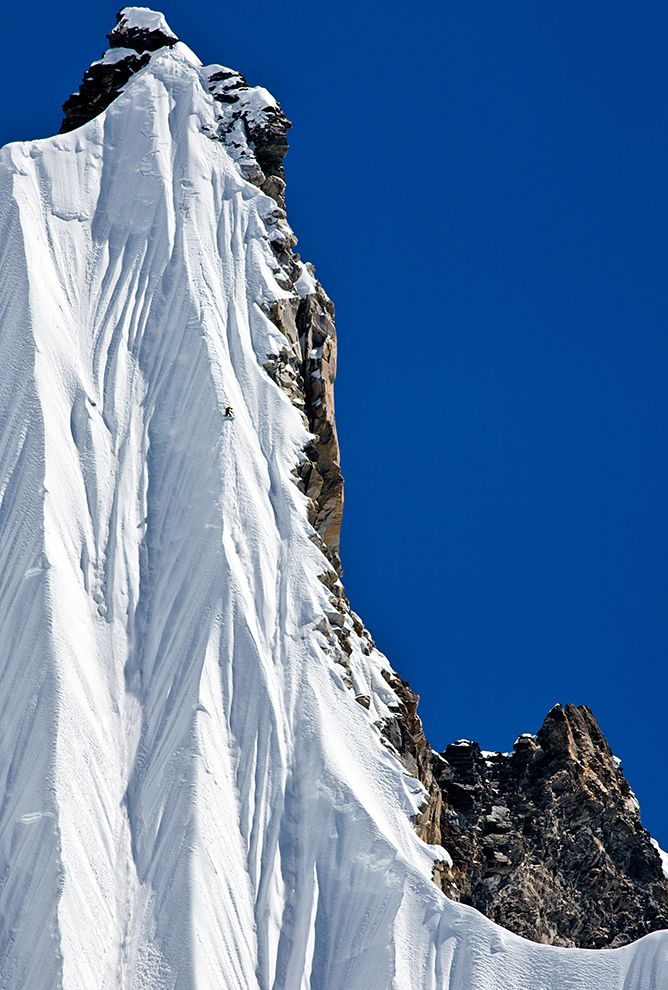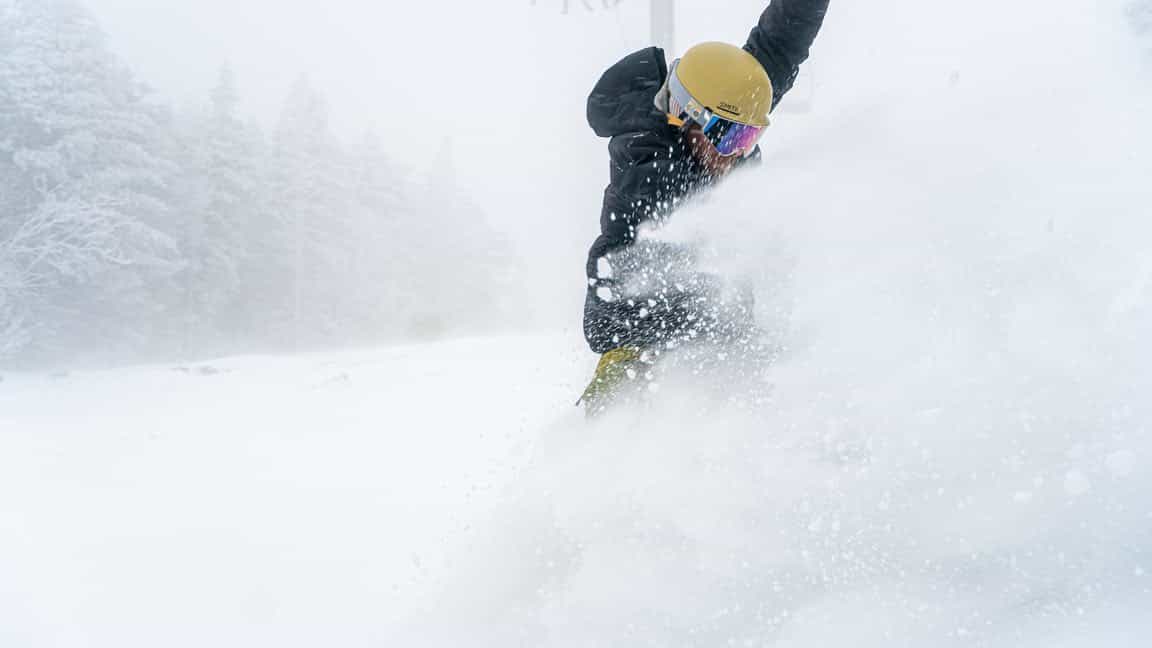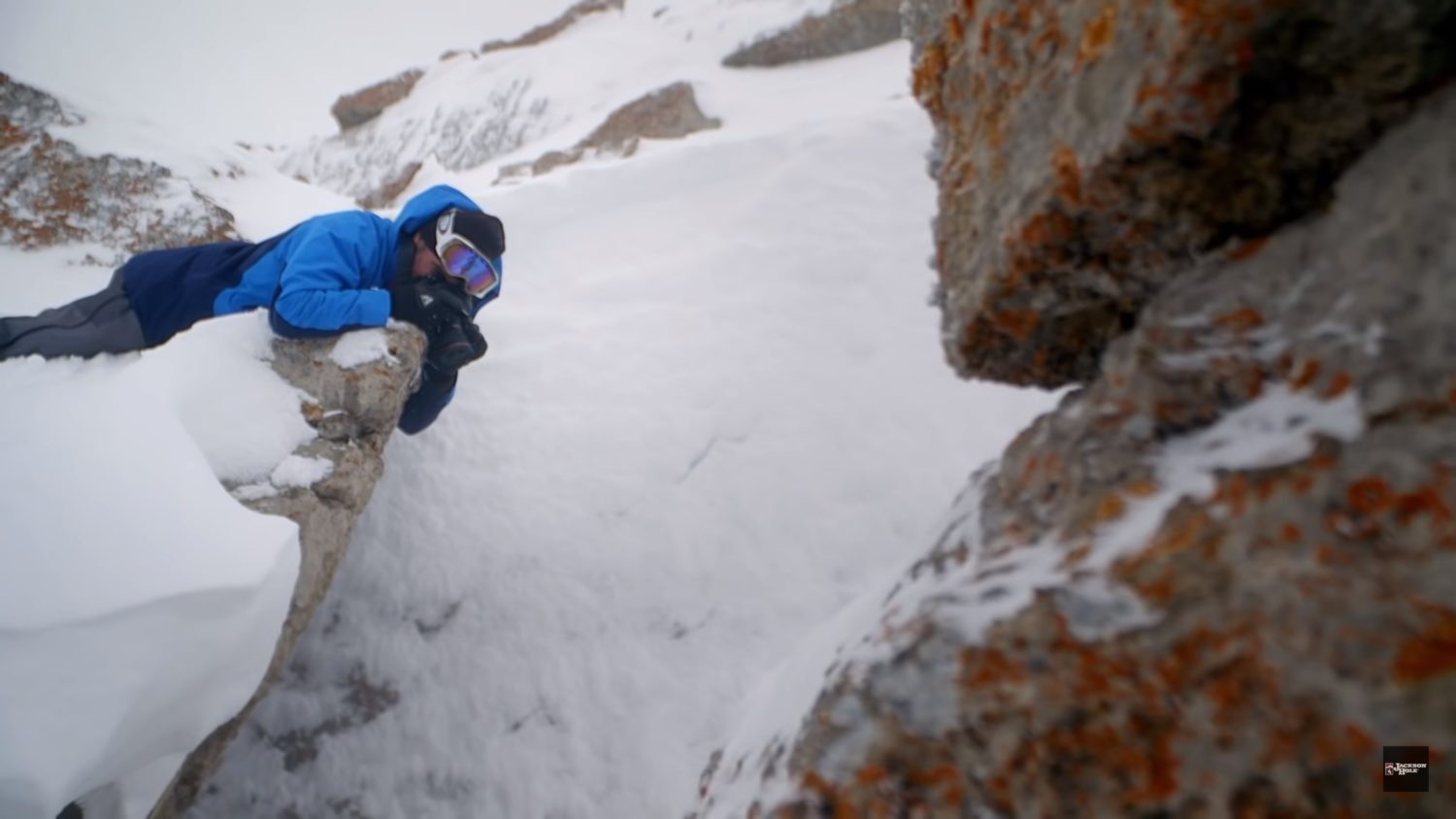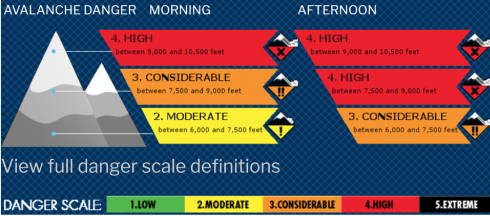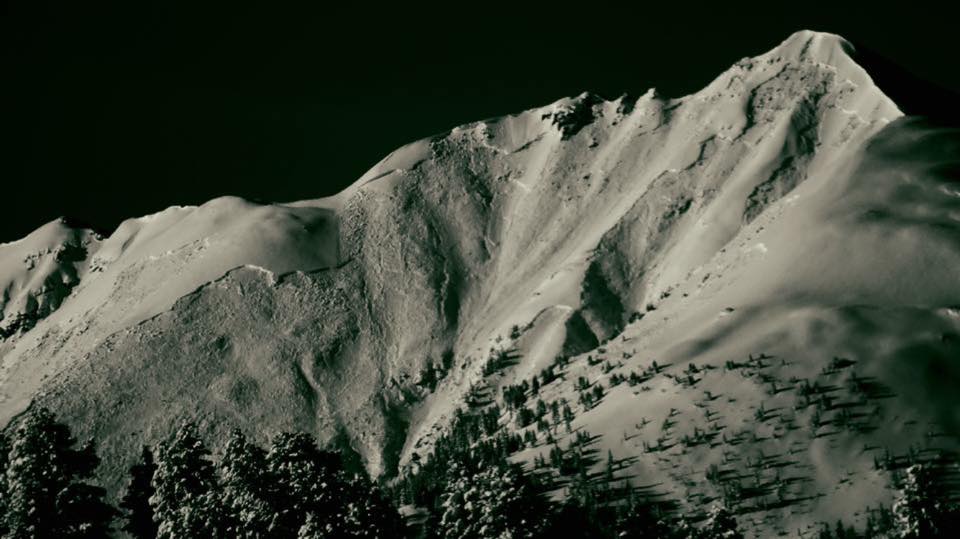
As winter returns and the excitement for skiing and riding powder begins to ramp back up, it’s important to remember that avalanche conditions are doing the same as well. Avalanche conditions occur due to several factors, including recent weather, snowfall, temperature fluctuation, wind speed/direction, slope pitch, slope aspect (or orientation), underlying terrain, and cumulative snowpack conditions. When the right, or should we say wrong, combination of these factors are encountered, a slide occurs.
Many factors contributing to avalanche conditions are variable (temperature, wind, snowpack) or maybe unknown (underlying terrain), which makes forecasting and predicting avalanche activity particularly difficult. However, there are a few constant or quantifiable factors that are easier to evaluate or determine and should remain at the forefront of one’s decision-making process when choosing a route in the backcountry. One such factor is the range of slope pitch, angle, or steepness. The constant in this factor is that most avalanches occur on slopes ranging from 30 to 45°.
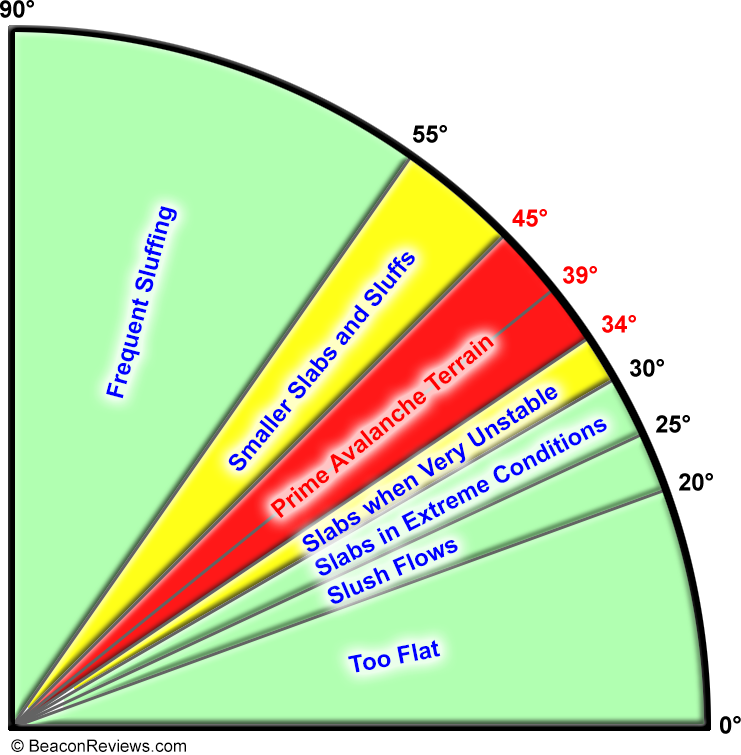
The reason most avalanches occur within this range is simply a matter of physics. Below 30°, gravity pulls an unstable layer of snow more directly down onto the layer below, resulting in more friction between these layers. As the angle of the slope increases, gravity plays a less direct force holding the layers together. It begins to transition to a lateral (sideways) force in the unstable layer against the stable layer below. At 45°, gravity is imposing an equal downward and lateral force. Friction as a function of gravity is compromised and the only thing preventing an avalanche is the cohesiveness of layers in the snowpack.
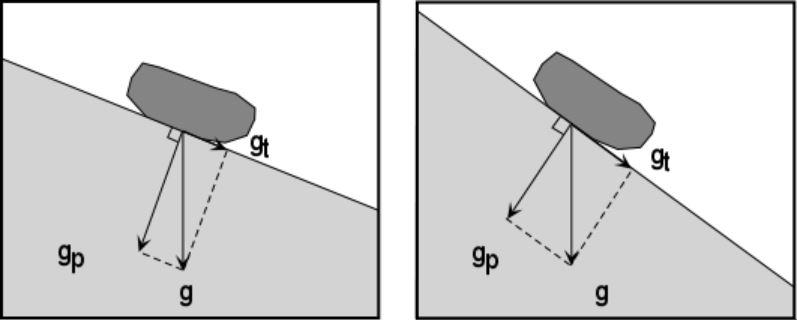
Above 45 degrees, gravity plays a more significant role in pulling loose snow down the face of a slope than holding it together. The sloughing of snow that falls on these slopes prevents a deep snowpack from building. These slopes are also typically less skied than those in the 30-45° range and therefore do not see as many avalanches due to the infrequency of human triggers.
Also notable is the consistent finding that the pitch where avalanche activity peaks is around 38°. The recent avalanche on Loveland Pass in Colorado had occurred on a slope ranging from 35°-45°and averaging 38° as reported by the Colorado Avalanche Information Center. McCammon wrote an excellent paper entitled “38° Revisited: A Closer Look at Avalanche Types & Slope Angles,” where he explains some caveats of this finding, like how geographical location plays a role. Those seeking more information should give this a read.
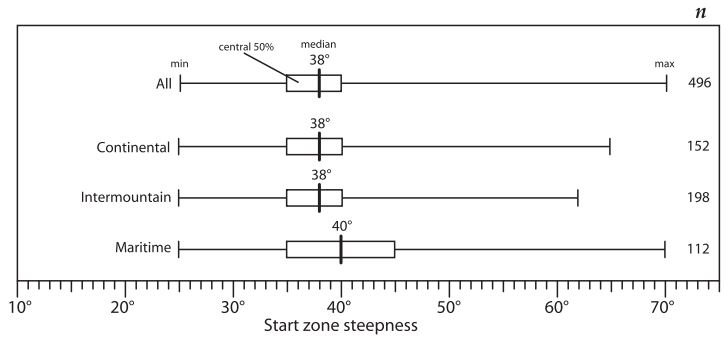
The number one tool for avoiding avalanches is sufficient planning. Through route-finding techniques, you can determine pitch before you head into the backcountry and identify areas you want to avoid. There are also many tools that can be used to determine the pitch of slope once in the backcountry, such as inclinometers, mirror compasses or the Poleinclinometer. Phone Apps such as Clinometer + Bubble Level are also available.
These tools in conjunction with good decision-making can help mitigate the amount of risk you are assuming. Before heading into the backcountry, always check on the latest information from your local avalanche authority so you’re fully aware of the conditions to expect and can make or adjust your plan accordingly. Never travel without the proper equipment, a partner, and a plan. Be safe, have fun and as always, Know Before You Go.
